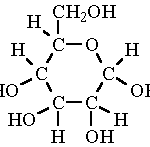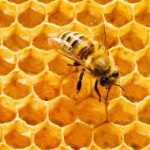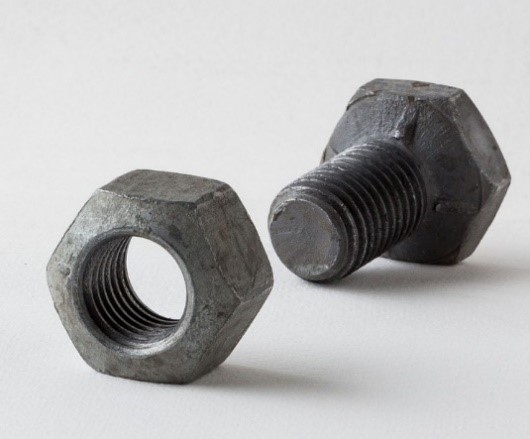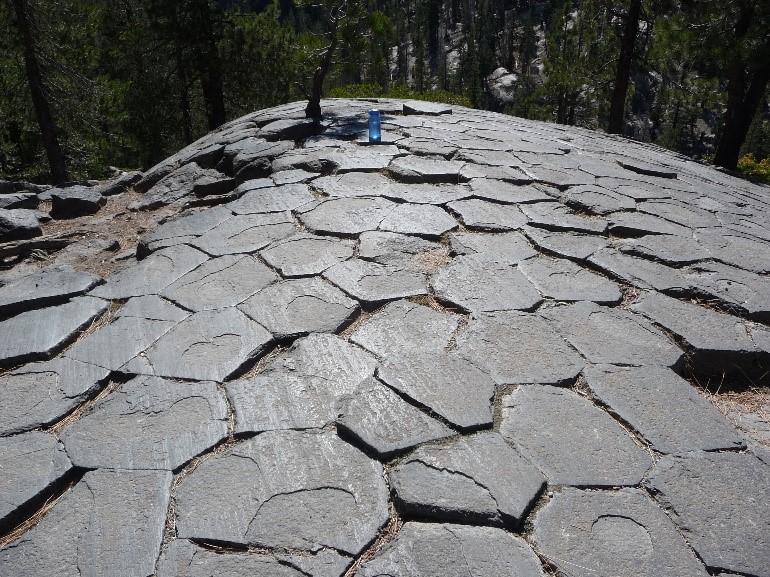Not that there was any pitched battle for my loyalties, but I have to say that the hexagon is my favorite geometric shape. I first became enamored in biochemistry when introduced to the basic building block of the carbon ring, illustrated as a hexagon of carbon atoms with other molecules hanging off of them. In medical school I spent hours of quality time with glucose, and even though the molecule can be folded and twisted, I appreciated its simplified depiction as an equilateral hexagon.
The next step of my hexagon journey was Charles Darwin and the conundrum of the honeycomb. The precise hexagonal structure of the honeycomb has fascinated naturalists for thousands of years.
In 36 BC the Greek mathematician Marcus Ternetius Varro suggested that a tile of hexagons produce the smallest total perimeter of wax compared to a square or a triangle, the two other shapes can make an unbroken tiled surface. The bottom line is that hexagons minimize the burden of wax production. This theory became known as the “honeybee conjecture.” Though widely accepted, the theory was not proved mathematically until 1999, some two thousand years later. Darwin proposed that economy of wax was the engine driving the natural selection advantage for those bees who could make a hexagon.
While this hypothesis explained why bees do what they do, Darwin faced the bigger challenge of explaining how they do it. The biggest hurdle was the church. Theologians had made the honeycomb one of the poster children for intelligent design. William Paley, an influential naturalist in Darwin’s time, provided a detailed analogy to a watch, stating that there could be no watch without the guiding hand of a watchmaker. Paley believed some sort of governing intelligence was the only explanation for a design that flummoxed human engineers.
I can understand this line of thought. As I try to construct a quilt in a pattern of interlocking hexagons, I think of the bee doing the same thing in the dark, working alongside other bees to construct a three dimensional hive. I’ve got a ruler and precise cutting tools but frankly, it’s a bitch to get precise 120 degree angles so that the three corners snug in together. If one angle is off kilter, the mistake is compounded in the next, to the point of ripping the whole thing out midst a string of expletives. But the uneducated bee, with its mere smidge of a brain, does it effortlessly. Oh and by the way, the hive is tilted just so from the horizontal to prevent the honey from dripping out.
The cornerstone of Darwin’s theory of natural selection is that there is no agenda to natural selection, no plan to make a watch or a honeycomb. Form simply evolves in response to survival pressures. If Darwin could not show that bees could change over time and become more efficient, his entire theory would crumble in the face of religious skeptics who believed “as it was in the beginning, now is and ever shall be, world without end.”
The hexagonal comb was my gateway into the relentless curiosity of Darwin. One summer I thought I might read the Origin of the Species. After a few chapters, I abandoned the project. The writing is so dense, filled with long descriptions crying out for a diagram or even better a YouTube video. But leaf through and you’ll find a vivid demonstration of an insatiable curiosity at work.
Darwin starts his description of the honeycomb by commenting that only a “dull man” could not be impressed by the hexagonal skills of the bee whose geometry skills outshine even the most accomplished craftsmen. He then blithely brushes aside thoughts of intelligent design and states, “But the difficulty is not nearly so great as it first appears; all this beautiful work can be shown, I think, to follow from a few very simple instincts.”
The next ten pages are a recitation of his extensive empirical research, which included a vast correspondence with other naturalists studying the honeycomb. Darwin was looking for a transitional structure, a simple comb that would demonstrate the starting point of its evolution. And thank God, a colleague sent Darwin a honeycomb from a Mexican bee that made circular, not hexagonal, cells. No special skills were needed to explain this geometry. The bee could simply rotate around a single point. However, the wasted spaced between circles put this bee at a survival disadvantage. Its hive was inefficient.
Darwin communicated with Francois Huber, another honeycomb expert. Huber was blind, but still managed to make meticulous observations of honeycomb construction with the assistance of his patient wife. He discovered Darwin’s “hive” bees start cell construction with a circular blob of wax which they then excavate. As the two adjoining cells compress against each other they form a straight edge.
Problem solved. Based on the evidence that simpler forms of hives exist, Darwin wrote “Hence we may safely conclude that if we could slightly modify the instincts already possessed by the [Mexican bee], this bee would make a structure as wonderfully perfect as the hive-bee.”
Darwin then described his own experiments where he inserted wax of different colors and configurations into a hive and observed the bees. I like to imagine him pitter-patter-puttering around his beehives, magnifying glass in hand and enduring the occasional sting, all in an effort to make his theory of evolution bullet-proof. He was simultaneously studying such things as earthworms, barnacles, the dispersal of seeds and the webbed feet of upland ducks. I smile to think of the mailman delivering yet another unusual package to his home.
One of the Darwin’s charms is that his experiments are simple and clever and could be duplicated by amateur naturalists in their own backyards. In fact, I think this would make a noteworthy science project for the motivated grade school student. Perhaps not start by putting colored wax into a beehive – I can’t imagine how many times Darwin got stung – but rather earthworms. Darwin played them music to test their hearing.
Once sensitized to the hexagon, I began to see them everywhere. The compound eyes of the dragonfly are hexagonal, the sea turtle shell has hexagonal plates, both presumably driven by the efficient packing of the hexagon.
Cell phone companies use hexagonal shaped cells to efficiently map the location of phone towers so that there will be no gaps in coverage. Settlers of Catan also uses hexagonal tiling.
There are some very practical advantages to the hexagon. Consider the pencil. It typically has a hexagonal shape, perhaps to provide a better grip, or better packing in a box or maybe to keep it from rolling off the table. (Personally, I would like hexagonal raspberries. My floor is stained with raspberries that have rolled off the table and gotten squished.)
The hexagonal heads of nuts and bolts are the perfect compromise between round and square to provide the necessary torque for the wrench. An eight-sided nut would be too circular and the wrench would fall off. A square shape would provide inadequate surface area for the torque. A quick perusal of our garage revealed a variety of hexagonal gas caps and knobs. The bathroom plumbing at my local library provided another example!
Chicken wire is hexagonal. A rectangular configuration loses its spunk if one wire fails – chickens can easily escape by squeezing through the vertical slit. In a hexagonal structure the wires are wrapped around two separate strands, if one fails, the fence retains its integrity, at least for chickens.
The overall shape of a snowflake is hexagonal, many crystals are hexagonal, (including the graphite in the pencil), all driven by the underlying chemistry of attraction and repulsion. Our physical world boasts some impressive hexagons. The Giant’s Causeway in Ireland consists of a lava field tiled in hexagons. The shrinking of the cooling lava created tension across the field leading to cracks. According to fracture mechanics, a hexagonal shape of cracks releases the most tension.
A similar configuration of basalt piles exists in California, called the Devil’s Postpile. The imperfection of the hexagons is related to the variable rate of cooling across the field.
Darwin must have known about the ubiquity of hexagons. Certainly he’d stared into the compound eyes of a dragonfly as he pondered the evolution of the eye. He constantly received animal specimens in the mail and would likely have a collection of hexagonal-plated turtle shells. Ireland’s Giant’s Causeway became widely known in 1692. Chicken wire was invented in 1844. Darwin, ever curious, must have also noticed the practical hexagonal design of nuts and bolts. Perhaps the hexagon was bringing it all together for him, from micro to macro, the surprising overlap of the physical, chemical and natural world.
Darwin died 100 years too early to appreciate the vast hexagon on the northern pole of Saturn, identified during the 1981 Voyager mission. This hexagon is 18,000 miles wide. I can imagine Darwin’s cosmic curiosity with this huge cloud swirling around a churning storm at its center, producing the exact same geometry as his humble bee. “What wild wind is at work here?” he comments as he taps his hexagonal pencil filled with hexagonal graphite crystals on his desk.
Follow Liza Blue on:
Share:









